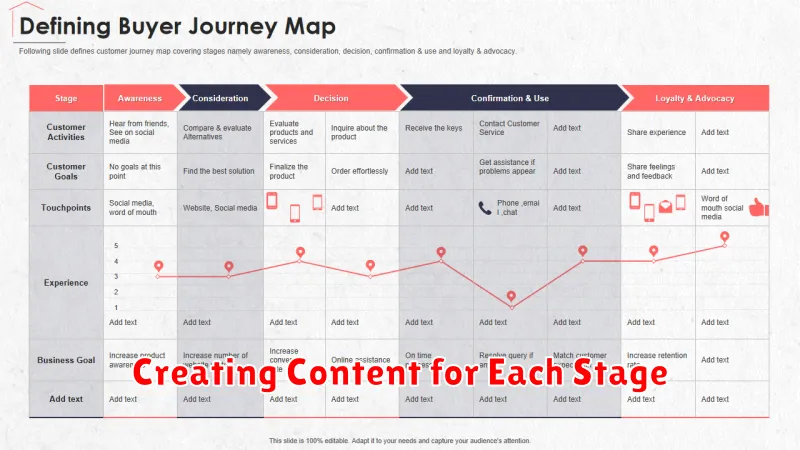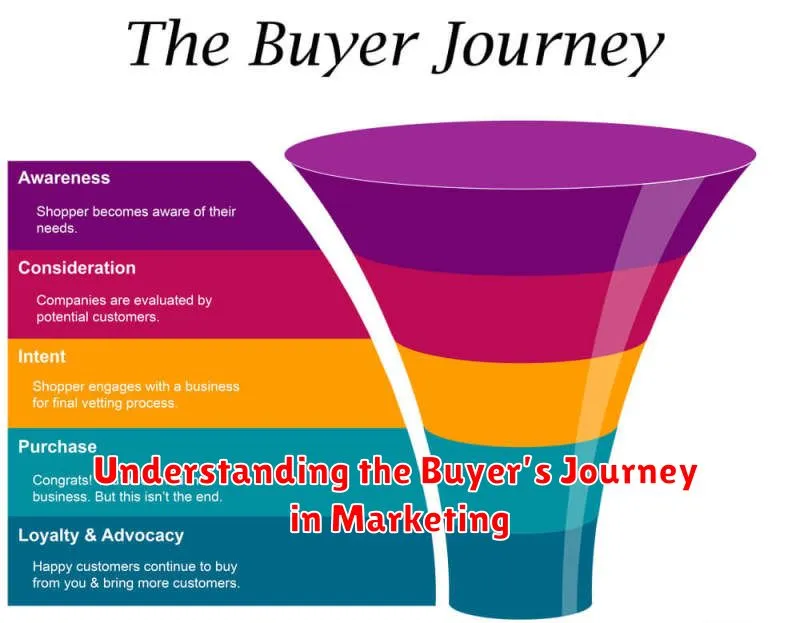Understanding the buyer’s journey is crucial for effective marketing. The buyer’s journey, also known as the customer journey, represents the process a potential customer goes through from initial awareness of a problem or need, through consideration of different solutions, to the final purchase decision. By understanding the stages of the buyer’s journey—awareness, consideration, and decision—marketers can tailor their marketing strategies and messaging to resonate with buyers at each specific point in their journey. This targeted approach maximizes engagement and increases the likelihood of conversion.
This article explores the buyer’s journey in detail, providing a comprehensive understanding of each stage and its implications for marketing. We’ll examine how the buyer’s journey influences content marketing, lead generation, and ultimately, sales. By grasping the nuances of the buyer’s journey, businesses can create marketing campaigns that effectively nurture leads, build customer relationships, and drive business growth. We’ll delve into the specific tactics and strategies that align with each stage of the buyer’s journey, empowering you to create a more impactful and results-driven marketing plan.
What Is the Buyer’s Journey?
The buyer’s journey is the process a potential customer goes through leading up to a purchase. It’s a framework that helps marketers understand and address the needs of their target audience at each stage.
This journey is typically divided into three key stages:
- Awareness Stage: The buyer recognizes a problem or need. They are researching and seeking information to understand their challenge.
- Consideration Stage: The buyer has clearly defined their problem and is evaluating different solutions and providers. They are comparing options and seeking detailed information.
- Decision Stage: The buyer has chosen a solution and is now ready to make a purchase. They may be comparing vendors or negotiating final terms.
By understanding the buyer’s journey, marketers can create targeted content and messaging that resonates with prospects at each stage, nurturing them toward a purchase decision.
Stages: Awareness, Consideration, Decision
The buyer’s journey is typically broken down into three key stages: awareness, consideration, and decision. Understanding these stages allows marketers to tailor their strategies and messaging effectively.
In the awareness stage, the potential customer identifies a problem or need. They are not yet aware of specific solutions. Marketing efforts here focus on educating the consumer about the problem and introducing the brand as a potential resource.
The consideration stage begins when the buyer starts researching potential solutions to their identified problem. They evaluate different approaches and providers. Marketing at this stage should provide valuable information that positions the brand as a strong contender.
Finally, the decision stage is where the buyer chooses a specific solution and vendor. Marketing efforts here should focus on reinforcing the value proposition and making the purchasing process as seamless as possible.
Creating Content for Each Stage

Effectively guiding potential customers through the buyer’s journey involves tailoring content to each specific stage. This ensures the information presented aligns with their current needs and motivates them towards the next step.
Awareness Stage
At this stage, individuals are experiencing a problem or have a need they wish to address. Content should focus on educating the audience about the problem itself and offer potential solutions in a general sense. Educational blog posts, infographics, and short videos are effective tools for this stage.
Consideration Stage
Now aware of potential solutions, prospects are evaluating different options. Content should showcase the benefits of your specific product or service without being overly promotional. White papers, case studies, and webinars can be helpful in demonstrating your expertise and value proposition.
Decision Stage
Ready to make a purchase, buyers seek reassurance and validation. Content should focus on proving your credibility and address any remaining concerns. Testimonials, product demos, and free trials are effective tools for this stage.
Using Customer Personas
Customer personas are semi-fictional representations of your ideal customers. They are based on research and data about your existing and potential customers. Developing these personas helps you understand your target audience’s needs, behaviors, and motivations.
Personas provide valuable insights into how your customers interact with your brand throughout the buyer’s journey. They inform marketing strategies by allowing you to tailor content and messaging to resonate with specific customer segments.
By using personas, you can anticipate customer needs at each stage of the buyer’s journey, allowing for more effective targeting and personalized communication. This leads to improved engagement, higher conversion rates, and stronger customer relationships.
Aligning Email and SEO Strategies
Aligning your email and SEO strategies can significantly impact your buyer’s journey. By coordinating these two powerful channels, you create a cohesive and effective online presence that nurtures leads and drives conversions.
SEO focuses on attracting organic traffic to your website through search engine rankings. This involves optimizing your site with relevant keywords, creating high-quality content, and building backlinks. Email marketing allows you to directly communicate with your audience, nurturing relationships and guiding them towards a purchase.
When these strategies work together, the benefits are amplified. For example, you can use SEO insights to inform your email content, tailoring messages to specific audience segments based on their search behavior. Similarly, you can leverage email campaigns to drive traffic to SEO-optimized landing pages, boosting your search rankings and increasing visibility.
This synergistic approach ensures consistent messaging across platforms, providing a seamless and personalized experience for your target audience throughout their buyer’s journey.
Measuring Journey Effectiveness
Measuring the effectiveness of the buyer’s journey is crucial for optimizing marketing strategies and maximizing ROI. It involves tracking key metrics and analyzing data at each stage to identify areas for improvement and understand what resonates with potential customers.
Key Performance Indicators (KPIs) vary depending on the specific goals of the journey. Common metrics include conversion rates at each stage, customer acquisition cost (CAC), customer lifetime value (CLTV), website traffic, engagement rates (e.g., likes, shares, comments), and lead generation numbers.
Analyzing these metrics helps determine which touchpoints are most effective, what content resonates with the target audience, and where potential customers are dropping off in the journey. This data-driven approach allows marketers to refine their strategies, personalize the customer experience, and ultimately drive more conversions.

